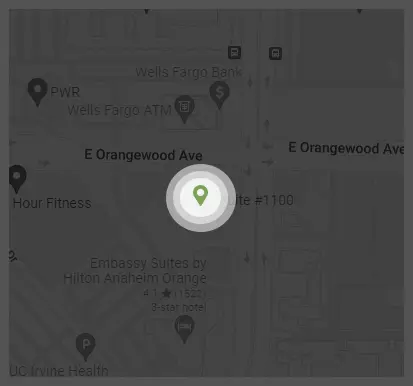Filing for bankruptcy is a big decision. Many people that do file for bankruptcy do so because they have no other options. Simply put, they have mountains of debt that they can only escape by filing for bankruptcy. However, filing for bankruptcy is the kind of thing you should consider in-depth before deciding.
Debt relief is significant, especially as young people face higher debt levels than in previous generations. It is so easy to get overwhelmed with debt these days. But debt-relief strategies like bankruptcy may ultimately cause more harm than good if not appropriately considered.
To better understand, we’re going to explore the consequences that filing for bankruptcy can bring. We’ll start by looking at the immediate consequences that occur when you file. These often have longer-reaching consequences than people assume. Following this, we’ll look at the long-term consequences of bankruptcy. Finally, we’ll briefly discuss some other debt-relief alternatives that may be relevant depending on your circumstances.
What Short-Term Consequences of Bankruptcy Have Long-Term Effects?
The most apparent consequence of bankruptcy is the loss of property. Most forms of bankruptcy involve selling off assets in order to raise funds to pay off creditors. This happens pretty much immediately in the process of bankruptcy. While this is mostly an immediate concern, it is important to remember the long-term effects it can have.

For example, you may lose real estate, vehicles, antiques, musical instruments, and other assets that are valuable not just in material wealth but in sentimental value. If you had something you planned to leave to your children, bankruptcy might put an end to that plan. Certain items may be so valuable to you that you spend years trying to track them down after your financial situation is resolved.
Another important and immediate effect that bankruptcy can have is on your loved ones. Say that your parents co-signed a loan for you. When you file for bankruptcy, you are, in a way, forfeiting your responsibility for that loan. However, since the responsibility was shared between you and your parents, debt from that loan may fall to them as part of the bankruptcy process.
Finally, filing for bankruptcy will badly damage your credit. This will occur alongside filing, but it also leads to many of the long-term consequences we’re here to discuss.
What Are the Long-Term Consequences of Filing Bankruptcy?
The damage that filing for bankruptcy does to your credit can result in some long-term, frustrating consequences. Your credit is how lenders determine whether or not they should trust you. Those with bad credit are less trustworthy, so lenders are more cautious about how much leeway they offer them in terms of interest rates and terms. Filing for bankruptcy is not a short-term kind of thing. Bankruptcy may continue to show on your credit report for up to a decade.
Getting a credit card or any other kind of credit extended to you is going to be a lot more difficult following bankruptcy. At least, it will be much more difficult until the information leaves your credit report. As such, bankruptcy can set your credit back quite a way. It may take you several years to slowly rebuild your credit to a point where lenders are less suspicious of you.
However, during the period of rebuilding your credit, you need to be careful not to fall into the same negative habits that led to your bankruptcy in the first place. These habits aren’t going to be addressed by filing for bankruptcy, so you will need to invest time and energy into learning and growing.

Getting a mortgage after bankruptcy can also be quite difficult. You are going to face higher interest rates and fees. You shouldn’t expect to have an easy time getting another mortgage after bankruptcy. It may be better to speak to an attorney about how you can protect your property during bankruptcy prior to filing. It’s almost always easier to protect the home you have now than it is to mortgage one after bankruptcy.
Bankruptcy may lead to other unexpected issues. Starting a business may take a lot more work to do, as you need to convince potential backers to look beyond your bankruptcy. In addition, there are some debts that can’t be forgiven, such as most student loan debt, government fines, or court-ordered child support.
What are Debt-Relief Alternatives to Bankruptcy?
Bankruptcy is only one form of debt relief, nor is it necessarily the best form. Bankruptcy may be highly effective for some people, but other people may find that an alternative to bankruptcy works better for dealing with debt.

One of the most common alternatives to bankruptcy is debt consolidation. Debt consolidation is a way of combining multiple debts into a single debt. Doing so gives you a single debt to focus on getting paid off instead of many different debts. It might not necessarily reduce your debt, but it could make it easier to keep up with it.
Another option is to communicate directly with your creditors. They may be more open to helping out than you expected. Nobody wins when you default on a debt, so it is often in their interest to negotiate different terms or a payment plan.
How Do I Pick the Best Debt-Relief Strategy for Me?
The best way to ensure that you pick a debt-relief strategy that works for you is to reach out to an experienced bankruptcy or debt-relief attorney. They’ve made it their business to help people in situations just like yours, so they’ll have the right knowledge and experience necessary to offer you advice and solutions to your debt problems. It will still take work and effort on your part since it is up to you to keep up with payments and avoid taking on new mountains of debt, but it is always better to work with an attorney that understands what you’re going through, what you need to do to tackle it, and what resources are available for support along the way.








